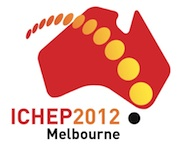Speaker
Dr
Cristina Biino
(Universita e INFN (IT))
Description
Semileptonic kaon decays offer the most precise determination of the CKM matrix element |Vus|. The experimental precision is however limited by the knowledge of the form factors of this decay, since these enter both the phase space integral and the detector acceptances. The NA48/2 experiment presents new high precision measurements of the form factors of the semileptonic decays of charged kaons (K+- -> pi0 l+- nu), based on 4.3 million Ke3 and 3.5 million Kmu3 decays, both with negligible background. The result matches the precision of the current world average on the vector and scalar form factors and allows to significantly reduce the form factor uncertainty on |Vus|. In addition, the comparison of both channels sets tight constraints on lepton flavour violation and other possible new physics.
The NA48/2 collaboration has also accumulated ~60000 semi-leptonic K charged decays Ke4(00) to pi0 pi0 e neutrino, increasing the world available statistics by several orders of magnitude. Background contamination below the percent percent level and very good pi0 reconstruction allow the first accurate measurement of the Branching Fraction and decay Form Factor at the percent level. The achieved precision makes possible the observation of small effects such as pi+ pi- to pi0 pi0 re-scattering below the 2 m(pi+) threshold. Concurrently, more than one million K charged decays Ke4(+-) to pi+ pi- e neutrino has been analyzed, leading to an improved determination of the Branching Fraction by a factor of 3 and detailed Form Factor studies. Both Ke4 modes decay properties bring new precise inputs to Low Energy QCD studies and can provide strong tests of ChPT predictions.
While the above analyses are close to completion and should appear shortly with final results, future prospects include the observation of several 1000 decays in similar muonic modes Kmu4(00) (never observed) and Kmu4(+-) (7 events observed). Such poorly known modes could be studied also in the forthcoming NA62 experiment currently under construction.
Author
Dr
Cristina Biino
(Universita e INFN (IT))
